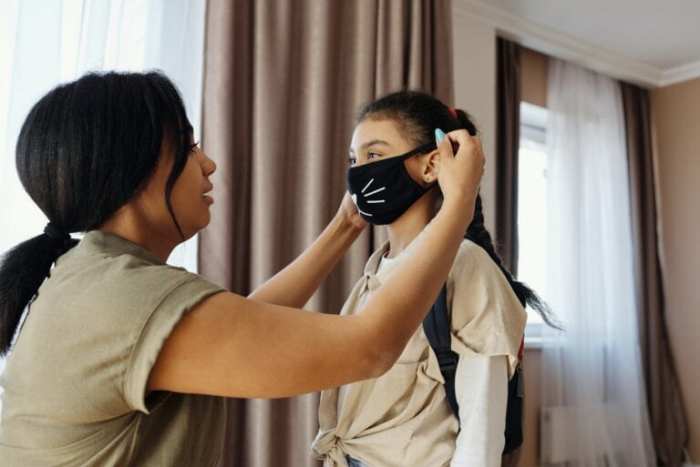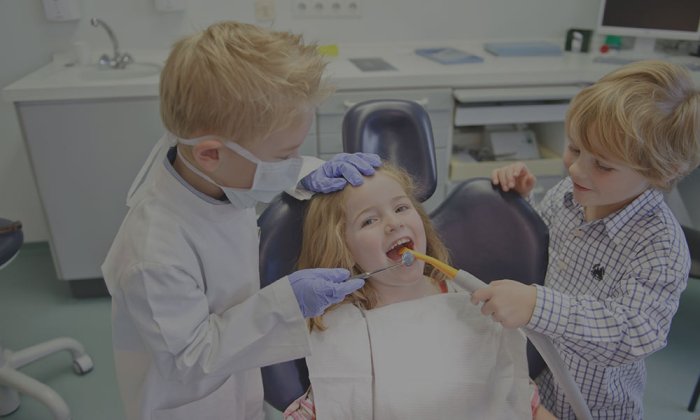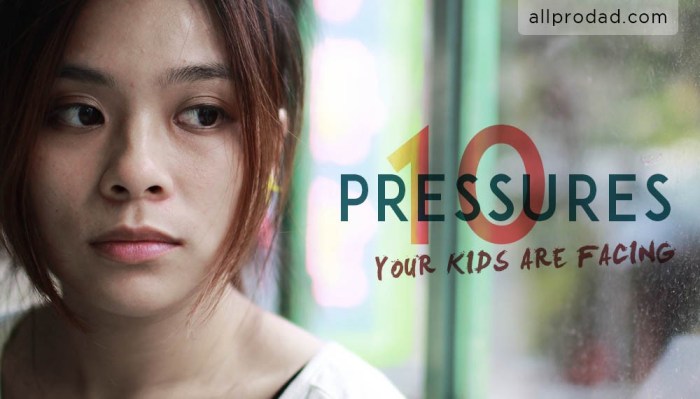In today’s media-saturated world, children are constantly bombarded with unrealistic images of beauty. These images can have a profound impact on their self-esteem and body image. As parents, it’s our responsibility to protect our kids from the negative effects of beauty pressure.
In this guide, we’ll explore the different ways we can do that, from teaching them media literacy to fostering body positivity.
We’ll also discuss the role of social media, the importance of cultural sensitivity, and the unique challenges faced by girls and boys regarding body image. By working together, we can help our kids develop a healthy and positive body image that will last a lifetime.
Media Literacy
In today’s media-saturated world, our children are constantly bombarded with images of unrealistic beauty standards. These images can have a significant impact on their self-esteem, body image, and overall mental health.
It is important to teach our kids to be critical consumers of media. We need to help them understand that the images they see are often carefully crafted to sell products and promote certain ideals. We also need to encourage them to talk to us about their feelings about the media they consume and how it makes them feel.
Teaching Kids to Critically Evaluate Media Messages
- Talk to your kids about media. Ask them what they’re watching, reading, and listening to. Talk to them about the messages they’re getting from these sources. Are they positive or negative? Do they promote healthy body image or unrealistic standards?
- Help your kids to understand the difference between reality and fiction. Show them how images are often altered or manipulated to create a certain look. Talk to them about the importance of being critical of what they see.
- Encourage your kids to be creative. Help them to find their own unique style and to express themselves through art, music, or writing. This will help them to develop a positive sense of self and to be less influenced by the media.
Body Positivity
Fostering body positivity in children, especially those who identify as female, non-binary, or transgender, is crucial for their well-being. Negative body image can lead to low self-esteem, eating disorders, and depression. By promoting body positivity, we can help children develop a healthy and accepting relationship with their bodies.
Strategies for Promoting Body Positivity
- Use inclusive language. Avoid using gendered terms like “ladies” or “gentlemen” and instead opt for gender-neutral terms like “everyone” or “folks.”
- Provide diverse representation in media. Expose children to images of people of all shapes, sizes, and abilities. This helps them understand that there is no one “ideal” body type.
- Create a supportive environment. Make sure children feel comfortable talking to you about their bodies and any concerns they may have. Let them know that you love and accept them unconditionally.
Incorporating Body Positivity into School
- Lesson plans: Include lessons on body positivity, self-acceptance, and media literacy.
- Extracurricular activities: Offer activities that promote body positivity, such as yoga, dance, or art therapy.
- School policies: Implement policies that prohibit body shaming and promote a positive school climate.
Resources for Body Positivity
Role Modeling
Parents and caregivers serve as powerful role models for children’s body image development. By demonstrating healthy attitudes towards beauty and body diversity, they can help shape their children’s perceptions and foster positive body esteem.
Modeling Body Acceptance
- Avoid making negative comments about your own or others’ bodies.
- Focus on your strengths and abilities, rather than your appearance.
- Celebrate different body types and sizes, including your own.
Encouraging Body Diversity
- Expose your children to diverse media representations of beauty.
- Discuss the unrealistic nature of idealized images in the media.
- Encourage your children to appreciate the beauty in all shapes and sizes.
Promoting Healthy Habits
- Model healthy eating and exercise habits.
- Emphasize the importance of self-care and well-being.
- Encourage your children to participate in activities that make them feel good about themselves.
Social Support
Peers and friends play a significant role in shaping a child’s body image. They influence each other’s perceptions of beauty and self-worth, and can either reinforce or challenge negative body image beliefs.
To create a supportive environment, parents can encourage their children to surround themselves with peers who value inner qualities and respect diversity in body types. They can also facilitate open conversations about body image concerns, creating a safe space where kids feel comfortable sharing their feelings.
Resources for Body Image Support
- The National Eating Disorders Association (NEDA): https://www.nationaleatingdisorders.org/
- The Body Positive Movement: https://www.thebodypositivemovement.org/
- The Dove Self-Esteem Project: https://www.dove.com/us/en/self-esteem-project.html
Sample Dialogue: Parent and Child
Parent: I’ve noticed you’ve been talking about your body in a negative way lately. Is there something you’d like to talk about?
Child: I don’t know. I just feel like I’m not as pretty as my friends. They’re all so thin and have perfect skin, and I’m not.
Parent: It’s important to remember that everyone is different. There’s no one “right” way to look. What’s important is that you’re healthy and happy with who you are.
Child: But I still don’t feel good about myself.
Parent: I understand. It can be tough to feel good about yourself when you’re surrounded by images of “perfect” bodies. But it’s important to remember that those images are often unrealistic. They’re not real life.
Child: I guess you’re right.
Parent: I’m always here if you want to talk about this or anything else. And remember, you’re beautiful just the way you are.
– Provide resources for educating kids about body image and beauty standards, including books, websites, and videos.

Educating kids about body image and beauty standards is crucial to help them develop a healthy body image and avoid the negative consequences of media pressure. There are numerous resources available to help you have these conversations with your kids.
Some helpful books include:
- The Body Image Workbook for Teens: Activities to Help You Build a Healthy Body Image and Overcome Negative Body Thoughts by Jessica Knoll
- Body Talk: How to Talk to Your Kids About Eating Disorders, Body Image, and Weight by Ellyn Satter
- Love Your Body: A Girl’s Guide to a Positive Body Image by Jessica Sanders
There are also several helpful websites and videos available.
- The National Eating Disorders Association (NEDA) has a website with resources for parents and teens on body image and eating disorders.
- The Body Positive Movement has a website with resources on body image and self-acceptance.
- The Dove Self-Esteem Project has a website with resources for parents and teens on body image and self-esteem.
Self-Care and Mindfulness
In the face of societal pressures, fostering self-care and mindfulness in children is crucial for nurturing a healthy body image. Self-care practices empower kids to prioritize their well-being, while mindfulness techniques promote self-acceptance and reduce negative body talk.
Self-Care Practices
Encourage kids to engage in activities that nourish their physical and mental health, such as:
- Regular exercise: Exercise releases endorphins that boost mood and reduce stress.
- Healthy eating: A balanced diet provides essential nutrients and fuels their growing bodies.
- Adequate sleep: Sufficient sleep promotes physical and mental recovery, reducing irritability and negative body perceptions.
- Relaxation techniques: Introduce techniques like yoga, meditation, or deep breathing to calm their minds and reduce anxiety.
- Setting boundaries: Teach kids to set limits with others who make negative comments about their appearance.
Mindfulness Techniques
Mindfulness helps kids become more aware of their thoughts and feelings without judgment:
- Body scans: Guide kids through body scans to cultivate body awareness and reduce negative self-talk.
- Gratitude exercises: Encourage them to focus on things they appreciate about themselves and their bodies.
- Positive affirmations: Help kids create and repeat positive statements about their appearance and worth.
- Mindful breathing: Teach them deep breathing techniques to calm their minds and reduce stress.
- Non-judgmental observation: Encourage kids to observe their thoughts and feelings without labeling them as “good” or “bad.”
Realistic Beauty Standards
Exposing children to diverse representations of beauty is crucial for fostering a healthy body image. By showcasing a range of ethnicities, body types, abilities, and ages, we can challenge narrow beauty ideals and promote inclusivity.
Media and role models play a significant role in shaping children’s perceptions of beauty. Choose media that features characters and models with diverse backgrounds and body types. Seek out role models who embrace and celebrate their unique qualities, promoting self-acceptance and a positive body image.
Media Examples
- Movies and TV shows: “Wonder Woman,” “Black Panther,” “Crazy Rich Asians”
- Magazines: “Teen Vogue,” “Allure,” “Shape”
- Online platforms: “Dove Real Beauty,” “Aerie Real Role Models,” “Body Positive Yoga”
Role Model Examples
- Activists: Jameela Jamil, Ashley Graham, Lizzo
- Athletes: Serena Williams, Simone Biles, Megan Rapinoe
- Celebrities: Mindy Kaling, Zendaya, Jameela Jamil
– Explain the difference between healthy and unhealthy beauty practices.
Healthy beauty practices prioritize overall health and well-being, while unhealthy practices can harm both physical and mental health. Understanding the distinction is crucial for maintaining a positive body image and self-esteem.
Healthy beauty practices focus on enhancing natural beauty without compromising health. They include:
- Maintaining a balanced diet and regular exercise
- Using natural, non-toxic skincare products
- Getting enough sleep and managing stress
- Seeking professional help for any body image concerns
Unhealthy Beauty Practices
Unhealthy beauty practices prioritize physical appearance over health and can lead to negative consequences. These include:
- Excessive dieting or skipping meals
- Using harsh or chemical-laden skincare products
- Undergoing cosmetic procedures without medical necessity
- Abusing substances like alcohol or drugs to alter appearance
These practices can lead to malnutrition, skin damage, body dysmorphia, and other health issues.
Social Media Influence
Social media platforms play a significant role in shaping our perceptions of beauty. The constant exposure to curated and often unrealistic images of beauty can create a distorted view of what is considered “normal” or “ideal.”
This exposure can lead to negative body image, low self-esteem, and eating disorders. To mitigate these negative effects, it is important to be aware of the impact of social media and to develop strategies for navigating it in a healthy way.
Tips for Navigating Social Media
- Be critical of the images you see. Remember that most images on social media are edited and filtered to present an idealized version of reality.
- Follow accounts that promote body positivity and diversity. These accounts can help you to see a wider range of body types and to challenge narrow beauty standards.
- Limit your time on social media. Spending too much time on social media can increase your exposure to unrealistic beauty standards and make you more likely to compare yourself to others.
- Talk to your children about social media. Help them to understand the impact of social media on body image and to develop healthy habits for using it.
– 10. Body Image in Different Cultures
Cultural factors play a significant role in shaping beauty standards and body image perceptions. Each culture has its unique set of values, beliefs, and practices that influence how people view and evaluate their bodies. Understanding these cultural influences is crucial for promoting body positivity and acceptance of diverse body types.
Cultural Factors Influencing Beauty Standards
- Media Representation: The media often perpetuates narrow beauty ideals that may not be representative of the diversity within a culture.
- Historical and Religious Beliefs: Cultural traditions and religious teachings can influence beauty standards, such as the preference for certain body shapes or skin tones.
- Social and Economic Status: Socioeconomic factors can impact access to resources and opportunities that influence body image, such as healthy food, exercise, and healthcare.
- Family and Community Norms: Family and community values and expectations can shape individuals’ perceptions of beauty and body image.
- Globalization and Westernization: Globalization and the influence of Western media can lead to the adoption of beauty standards that may not align with traditional cultural values.
Promoting Cultural Sensitivity and Acceptance
- Education and Awareness: Raising awareness about the diverse range of beauty standards across cultures can help challenge narrow ideals.
- Representation in Media: Ensuring diverse representation in media can promote acceptance and challenge stereotypes.
- Cultural Sensitivity Training: Training individuals in cultural sensitivity can help them understand and respect different beauty standards.
- Body Positivity Campaigns: Campaigns that celebrate and promote body positivity can help individuals embrace their unique bodies.
- Community Support: Creating supportive communities where individuals feel valued and accepted regardless of their body type is essential.
Gender and Body Image
Body image issues are not limited to one gender. Both girls and boys face unique challenges and societal pressures that can negatively impact their self-esteem and well-being.
For girls, the focus on thinness and physical attractiveness is often relentless. They may feel pressured to conform to unrealistic beauty standards, which can lead to eating disorders, depression, and anxiety. Boys, on the other hand, may experience pressure to be muscular and athletic, which can lead to steroid use and other unhealthy behaviors.
Media and Societal Messages
The media plays a significant role in shaping body image perceptions. Images of idealized bodies are constantly bombarding us, creating a sense of inadequacy and dissatisfaction. Societal messages also contribute to these pressures, with thinness and muscularity often being equated with success and desirability.
Impact on Mental Health
Negative body image can have a devastating impact on mental health. It can lead to low self-esteem, anxiety, depression, and even suicidal thoughts. Individuals with poor body image may also engage in unhealthy behaviors, such as disordered eating, excessive exercise, and substance abuse.
Promoting Positive Body Image
Promoting positive body image is essential for the well-being of both girls and boys. Parents, educators, and healthcare providers can play a vital role in fostering self-acceptance and healthy body image.
- Encourage realistic body expectations by discussing the diversity of body shapes and sizes.
- Focus on health and well-being rather than appearance.
- Promote body positivity by celebrating the unique qualities and strengths of each individual.
- Teach critical thinking skills to help children and adolescents evaluate media messages and societal pressures.
- Provide access to resources and support for individuals struggling with body image issues.
Advocacy and Activism
Advocacy and activism play a crucial role in promoting positive body image by challenging unrealistic beauty standards and fostering a more inclusive and diverse representation of bodies in media and society.
Numerous organizations and campaigns are working to challenge beauty standards and promote body positivity. For instance, the National Eating Disorders Association (NEDA) provides support, resources, and advocacy for individuals struggling with eating disorders and body image issues. The Dove Real Beauty campaign has been running for over a decade, aiming to challenge narrow beauty ideals and celebrate diversity in beauty.
Case Studies
- The Body Positive Movement: This grassroots movement has gained significant momentum in recent years, advocating for the acceptance and celebration of all bodies, regardless of size, shape, or appearance. The movement has led to increased visibility and representation of diverse bodies in media, fashion, and advertising.
- The #MeToo Movement: While primarily focused on sexual harassment and assault, the #MeToo movement has also highlighted the intersectionality of body image and sexual violence. By empowering survivors to share their stories, the movement has challenged societal norms and beauty standards that perpetuate objectification and victim-blaming.
Challenges and Opportunities
Advocacy and activism in this field face challenges such as resistance from industries that profit from promoting unrealistic beauty standards, as well as societal stigma and discrimination against individuals who do not conform to these standards.
However, there are also significant opportunities for advocacy and activism to make a positive impact. By raising awareness, challenging harmful stereotypes, and promoting inclusive representation, advocates and activists can create a more body-positive and inclusive society.
Resources for Parents and Educators

Empowering parents and educators is crucial for fostering a positive body image in children. By providing resources and guidance, we can equip them to support children effectively, address their concerns, and foster a healthy body image.
Support Groups and Online Forums
Connecting with others who share similar experiences can be invaluable. Support groups and online forums offer a safe and supportive space for parents and educators to exchange information, share strategies, and receive emotional support.
- The National Eating Disorders Association (NEDA): https://www.nationaleatingdisorders.org/
- The Body Positive Movement: https://thebodypositive.org/
- The Association for Size Diversity and Health (ASDAH): https://www.asdah.org/
Books, Articles, and Websites
A wealth of resources is available to help parents and educators understand body image issues and how to support children. Books, articles, and websites provide evidence-based information, practical tips, and case studies.
- Body Image: A Guide for Parents and Educators by Sarah Murnen and Susie Orbach
- Helping Your Child Develop a Healthy Body Image by the American Psychological Association
- The Body Image Workbook for Teens by Jessica Kingsley Publishers
- National Eating Disorders Association website: https://www.nationaleatingdisorders.org/
- The Body Positive Movement website: https://thebodypositive.org/
Table of Resources
The following table summarizes the available resources, including the target audience, key topics covered, and contact information:
| Resource | Target Audience | Key Topics Covered | Contact Information |
|---|---|---|---|
| NEDA | Parents, educators, individuals with eating disorders | Eating disorders, body image, support groups | https://www.nationaleatingdisorders.org/ |
| The Body Positive Movement | Parents, educators, individuals struggling with body image | Body positivity, self-acceptance, size diversity | https://thebodypositive.org/ |
| ASDAH | Parents, educators, healthcare professionals | Size diversity, weight bias, health at every size | https://www.asdah.org/ |
| Body Image: A Guide for Parents and Educators | Parents, educators | Body image development, supporting children, media literacy | https://www.amazon.com/Body-Image-Parents-Educators-Murnen/dp/1855754041 |
| Helping Your Child Develop a Healthy Body Image | Parents | Body image in children, parental influence, healthy eating habits | https://www.apa.org/topics/children/body-image |
| The Body Image Workbook for Teens | Teens, parents, educators | Cognitive behavioral therapy, self-esteem, body acceptance | https://www.amazon.com/Body-Image-Workbook-Teens-Kingsley/dp/1853029716 |
Long-Term Impact of Beauty Pressure

Exposure to negative beauty standards can have significant long-term consequences for individuals, particularly during adolescence and young adulthood. These consequences can manifest in various aspects of life, including physical and mental health, relationships, and overall well-being.One of the most concerning long-term effects of beauty pressure is the development of eating disorders.
In an attempt to conform to societal ideals of thinness, individuals may engage in unhealthy eating behaviors such as restrictive dieting, binge eating, or purging. Eating disorders can have devastating physical and mental health consequences, including malnutrition, heart problems, anxiety, and depression.Beauty
pressure can also lead to body dysmorphic disorder (BDD), a mental health condition in which individuals have a distorted perception of their own appearance. They may obsess over perceived flaws and engage in excessive grooming or cosmetic procedures in an attempt to improve their appearance.
BDD can significantly impair an individual’s quality of life and lead to social isolation and depression.Furthermore, exposure to negative beauty standards can contribute to low self-esteem and body dissatisfaction. Individuals who feel they do not meet societal expectations of beauty may experience feelings of inadequacy, shame, and anxiety.
This can lead to a lack of confidence and difficulty forming healthy relationships.
Early Intervention and Ongoing Support
Given the potential long-term consequences of beauty pressure, it is crucial to provide early intervention and ongoing support for individuals who are struggling with body image issues. Parents, educators, and healthcare professionals can play a vital role in helping individuals develop a healthy body image and cope with the pressures of society.Parents
can start by promoting positive body messages at home and modeling healthy behaviors. They can encourage their children to focus on their strengths and abilities rather than their appearance. Educators can incorporate body-positive messages into their curricula and provide resources for students who are struggling with body image issues.
Healthcare professionals can screen for eating disorders and BDD and provide appropriate treatment and support.By providing early intervention and ongoing support, we can help individuals develop a healthy body image and mitigate the long-term consequences of beauty pressure.
Collaborative Approach
Protecting children from beauty pressure requires a collaborative effort from parents, educators, healthcare professionals, and the community. By working together, we can create a supportive environment where children feel valued for their unique qualities, not their appearance.
Successful partnerships have been formed to address this issue. For example, the National Eating Disorders Association (NEDA) and the Dove Self-Esteem Project have partnered to provide resources and education to parents, educators, and children on body image and eating disorders.
Outcome Summary
Protecting our kids from beauty pressure is an ongoing journey. It requires patience, understanding, and a willingness to listen to our children’s concerns. By following the tips in this guide, we can help our kids develop a healthy and positive body image that will last a lifetime.
Helpful Answers
What are some tips for teaching kids media literacy?
There are a few things you can do to teach your kids media literacy. First, talk to them about the different types of media they consume. Help them understand that not everything they see in the media is real or accurate.
Second, encourage them to think critically about the messages they see in the media. Ask them questions like: “Who created this message?” “What is the purpose of this message?” “Is this message trying to sell me something?” Third, help your kids find positive role models in the media.
Look for characters who are diverse, healthy, and confident.
How can I foster body positivity in my child?
There are a few things you can do to foster body positivity in your child. First, be a positive role model. Let your child see you accepting your own body, and talk to them about the importance of self-acceptance. Second, create a supportive environment at home.
Make sure your child knows that you love and accept them no matter what they look like. Third, encourage your child to participate in activities that make them feel good about themselves. This could include sports, dance, art, or music.
What are some tips for talking to my child about body image?
When talking to your child about body image, it’s important to be open and honest. Let your child know that it’s okay to feel insecure about their body sometimes. However, it’s also important to help them understand that their worth is not based on their appearance.
Here are a few tips for talking to your child about body image:

